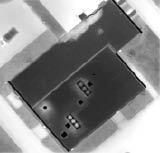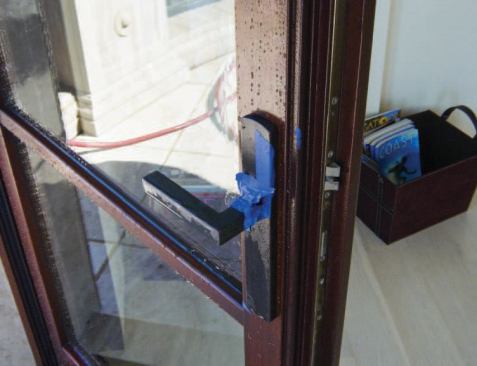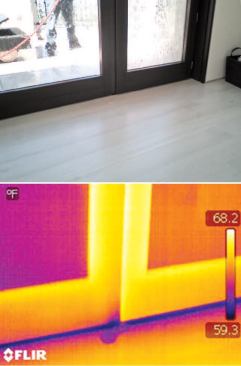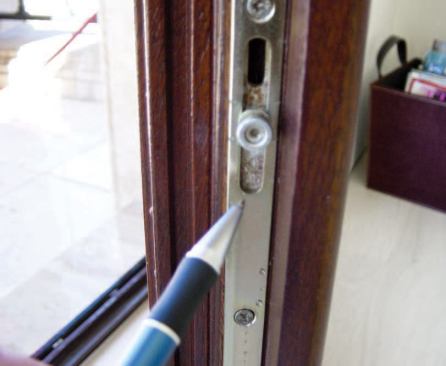Leaky Glass Door
After getting up to speed on previous work that had been done, w…
Sometimes IR scanning is a nice complement to an investigation that probably could have been solved without it, as in the case here.
This home, located in Newport Coast, Calif., was eight months old when we were called in. Like many coastal homes, it had a wall of glass facing west, which bore the brunt of the storms coming off the ocean. The owner had complained that water was always coming in at the floor along the double glass doors. The builder had tried several times to fix the problem, replacing all the weatherstripping and recaulking every possible entry point, but nothing had worked. They heard about our infrared and water-testing services and called us to determine the cause.
After getting up to speed on what had been done, we used a hose to perform a water test, which would help us figure out where the water was getting in. We taped off obvious points of entry, like the keyhole, to rule those out. Before long, water was coming in under the door, as both the visual and infrared photos show. When we opened the door, the IR scanner quickly picked up something that might not have been obvious — the water was flowing out from inside the bottom corner of the door. The problem wasn’t the caulking or weatherstripping, but simply a small gap between the door handle and the faceplate, which allowed water to enter and run down through the three-point locking mechanism. Note the rust spot on the hardware where the water came in. We recommended adding a rubber washer between the handle and the plate — an inexpensive fix, considering how much money had been invested in trying to solve the problem.





